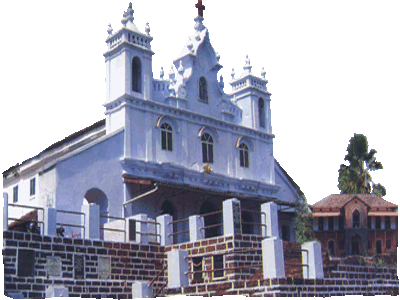
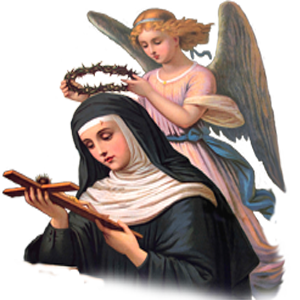
Prayer to Saint Rita
Holy Patroness of those in need, Saint Rita, so humble, pure and patient,
whose pleadings with thy Divine Spouse are irresistible, obtain for me from thy
Crucified Christ my request (mention it here). Be kind to me, for the greater glory of God,
and I promise to honor thee and to sing thy praises forever.
Oh glorious St. Rita, who didst miraculously participate in the sorrowful
Passion of our Lord Jesus Christ, obtain for me the
grace to suffer with resignation the troubles of this life, and
protect me in all my needs. Amen
Life of Saint Rita
EARLY LIFE
Rita was born in the year 1381 in the village of Roccaporena, near Cascia , Italy . Her parents, Antonio and Amata Lotti, considered her birth a very special gift from God, for Rita was born to them as they were already advancing in age. As a young girl Rita frequently visited the convent of the Augustinian Nuns in Cascia and dreamed of one day joining their community. Her parents, however, had promised her in marriage, according to the custom of the day, to Paolo Mancini, a good man of strong and impetuous character. Rita accepted her parents’ decision, resolved to see this as God’s will for her.
MARRIED LIFE
The young couple was joined in marriage and soon twin boys were born to them. Rita found herself occupied with the typical concerns of a wife, mother, and homemaker of Roccaporena, while Paolo was employed as a watchman for the town. In Cascia, as elsewhere, a great rivalry existed between two popular political factions, the Guelphs, and the Ghibellines. As a minor official of the town, Paolo often found himself drawn into the conflict, and the strain that this caused probably accounts for the tension, which he sometimes brought into the Mancini household. By her prayer, patience, and affection, however, Rita was able to ease the stress and worry her husband experienced, but she was not able to shield him altogether from the dangers to which society exposed him.
DEATH OF HUSBAND AND SONS
One day as Paolo was returning home from work he was ambushed and killed. The pain which this unexpected and violent death inflicted upon Rita was only compounded by the fear she felt that her two teenage sons, moved by the unwritten law of the “vendetta,” would seek to avenge their father’s death. Rita’s only recourse was to prayer and persuasion. As it happened, the death of both boys from natural causes a short time later removed them from physical and spiritual danger. Despite her great burden she could still thank God that they had died in peace, free of the poison of murder to which hatred and revenge might have otherwise drawn them.
PEACEMAKER
Now alone in the world and without family responsibilities, Rita once more turned her thoughts to the desired vocation of her youth, that of joining the Augustinian Nuns of Saint Mary Magdalene Monastery. Some of the religious of the community, however, were relatives of the members of the political faction considered responsible for Paolo’s death, and so as not to tempt the harmony of the convent, Rita’s request for admission was denied. Fortunately, she was not to be easily dissuaded from following what she knew to be God’s plan for her. She implored her three patron saints — John the Baptist, Augustine, and Nicholas of Tolentino to assist her, and she set about the task of establishing peace between the hostile parties of Cascia with such success that her entry into the monastery was assured.
THE GIFT OF THE THORN
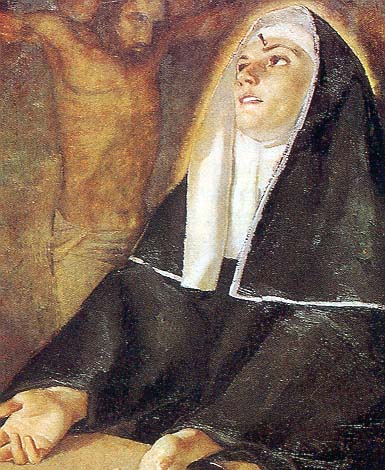 At the age of thirty-six Rita pledged to follow the ancient Rule of Saint
Augustine. For the next forty years she gave herself wholeheartedly to prayer
and works of charity, striving especially to preserve peace and harmony among
the citizens of Cascia. With a pure love she wanted more and more to be intimately
joined to the redemptive suffering of Jesus, and this desire of hers was satisfied
in an extraordinary way. One day when she was about sixty years of age, she was
meditating before an image of Christ crucified, as she was long accustomed to doing.
Suddenly a small wound appeared on her forehead, as though a thorn from the crown
that encircled Christ’s head had loosed itself and penetrated her own flesh. For the
next fifteen years she bore this external sign of stigmatization and union with the
Lord. In spite of the pain she constantly experienced, she offered herself courageously
for the physical and spiritual well being of others. During the last four years of her
life Rita was confined to bed and was able to eat so little that she was practically
sustained on the Eucharist alone. She was, nevertheless, an inspiration to her sisters
in religion and to all who came to visit her, by her patience and joyful disposition despite
her great suffering.
At the age of thirty-six Rita pledged to follow the ancient Rule of Saint
Augustine. For the next forty years she gave herself wholeheartedly to prayer
and works of charity, striving especially to preserve peace and harmony among
the citizens of Cascia. With a pure love she wanted more and more to be intimately
joined to the redemptive suffering of Jesus, and this desire of hers was satisfied
in an extraordinary way. One day when she was about sixty years of age, she was
meditating before an image of Christ crucified, as she was long accustomed to doing.
Suddenly a small wound appeared on her forehead, as though a thorn from the crown
that encircled Christ’s head had loosed itself and penetrated her own flesh. For the
next fifteen years she bore this external sign of stigmatization and union with the
Lord. In spite of the pain she constantly experienced, she offered herself courageously
for the physical and spiritual well being of others. During the last four years of her
life Rita was confined to bed and was able to eat so little that she was practically
sustained on the Eucharist alone. She was, nevertheless, an inspiration to her sisters
in religion and to all who came to visit her, by her patience and joyful disposition despite
her great suffering.
THE ROSE
 One of those who visited her some few months before her death — a relative from
her hometown of Roccaporena — was privileged to witness firsthand the extraordinary
things wrought by Rita’s requests. When asked whether she had any special desires,
Rita asked only that a rose from the garden of her parents’ home be brought to her.
It was a small favor to ask, but quite an impossible one to grant in the month of
January! Nevertheless, on returning home the woman discovered, to her amazement,
a single brightly-colored blossom on the bush where the nun said it would be.
Picking it, she returned immediately to the monastery and presented it to Rita
who gave thanks to God for this sign of love. Thus, the saint of the thorn became
the saint of the rose, and she whose impossible requests were granted her became
the advocate of all those whose own requests seem impossible as well. As she breathed
her last, Rita’s final words to the sisters who gathered around her were, “Remain in
the holy love of Jesus. Remain in obedience to the holy Roman Church. Remain in
peace and fraternal charity.”
One of those who visited her some few months before her death — a relative from
her hometown of Roccaporena — was privileged to witness firsthand the extraordinary
things wrought by Rita’s requests. When asked whether she had any special desires,
Rita asked only that a rose from the garden of her parents’ home be brought to her.
It was a small favor to ask, but quite an impossible one to grant in the month of
January! Nevertheless, on returning home the woman discovered, to her amazement,
a single brightly-colored blossom on the bush where the nun said it would be.
Picking it, she returned immediately to the monastery and presented it to Rita
who gave thanks to God for this sign of love. Thus, the saint of the thorn became
the saint of the rose, and she whose impossible requests were granted her became
the advocate of all those whose own requests seem impossible as well. As she breathed
her last, Rita’s final words to the sisters who gathered around her were, “Remain in
the holy love of Jesus. Remain in obedience to the holy Roman Church. Remain in
peace and fraternal charity.”
DEATH
 Having faithfully and lovingly responded to God’s many invitations to her
in the course of her seventy-six years, Rita returned to God in peace on May 22,
1457. Her body, which has remained incorrupt over the centuries, is venerated today
in the shrine of Cascia, which bears her name. Her feast is observed on the anniversary
of her death, 22 May.
Having faithfully and lovingly responded to God’s many invitations to her
in the course of her seventy-six years, Rita returned to God in peace on May 22,
1457. Her body, which has remained incorrupt over the centuries, is venerated today
in the shrine of Cascia, which bears her name. Her feast is observed on the anniversary
of her death, 22 May.
History of our chapel
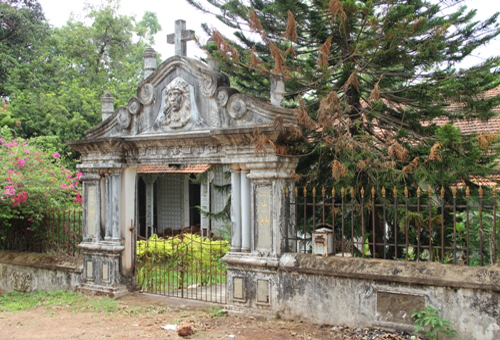 This year St. Rita’s Chapel, Carona, Aldona, celebrates its 150 years.
But it has been around 250 years since the devotion to St. Rita started in Carona.
This devotion was started in Carona by the Vaz Family through their Priest
Fr. Damioa Salvador Vaz. From then on, this family came to be known as Santa Rita Vaz.
At that moment, in the world the devotion to St. Rita had reached to Africa from Italy.
Fr. Damioa Vaz who was working as a missionary in Africa brought the statue of St. Rita to
his house on May 16th, 1764. Taking special permission from the Archbishop of Goa ( Provisao
de 16 de Maio, 1764) he started a small chapel in his house itself which operated for 100
years. Later on when the present chapel was built the statue of St. Rita was shifted from
Fr. Damioa’s house to the altar of the new chapel, on 28th June 1864.
This year St. Rita’s Chapel, Carona, Aldona, celebrates its 150 years.
But it has been around 250 years since the devotion to St. Rita started in Carona.
This devotion was started in Carona by the Vaz Family through their Priest
Fr. Damioa Salvador Vaz. From then on, this family came to be known as Santa Rita Vaz.
At that moment, in the world the devotion to St. Rita had reached to Africa from Italy.
Fr. Damioa Vaz who was working as a missionary in Africa brought the statue of St. Rita to
his house on May 16th, 1764. Taking special permission from the Archbishop of Goa ( Provisao
de 16 de Maio, 1764) he started a small chapel in his house itself which operated for 100
years. Later on when the present chapel was built the statue of St. Rita was shifted from
Fr. Damioa’s house to the altar of the new chapel, on 28th June 1864.The chapel was blessed on June 28th 1864 and a Confraria (Konfrari) in the name of St. Rita was formed. In the whole Archdiocese of Goa, St. Rita has one church and two chapels dedicated to her.
St. Rita is the Patron Saint of the Impossible. In the Year 1627, she was declared as Blessed Rita and on 24th May 1900 Pope Lio XIII officially canonized Rita as Saint.
Sant Franciskachem Kopel:Panth
 Hem Kopel pantintle Bhavboinechea ekcharacho nomuno. Dez.3rer hea Kopelant vodda dobazean,
mis bettounn hem fest somorombhtat. Tech porim Sant Khursachi porob Maiache 3rer ters ani
Landin rozar korun somorombhtat.
Hem Kopel pantintle Bhavboinechea ekcharacho nomuno. Dez.3rer hea Kopelant vodda dobazean,
mis bettounn hem fest somorombhtat. Tech porim Sant Khursachi porob Maiache 3rer ters ani
Landin rozar korun somorombhtat.
Sant Khursachem Kopel :Grande Carona
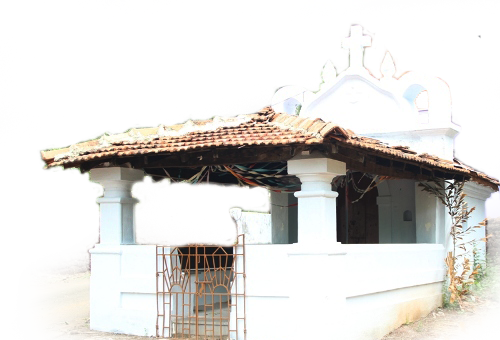 Bhou mankullem Kopel hem. Rostear thaun disti poddona khorem, pun tem
polletoleank dadoskai bogta.Bhovttoncho vattar bore tore nettoun, hea Kopelache
fest Mai mhoinneant somorombhtat.
Bhou mankullem Kopel hem. Rostear thaun disti poddona khorem, pun tem
polletoleank dadoskai bogta.Bhovttoncho vattar bore tore nettoun, hea Kopelache
fest Mai mhoinneant somorombhtat.
Sant Sebastian Kopel:Khursavaddo
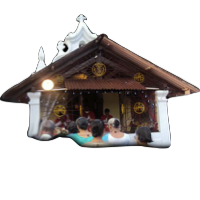 Hem Kopel banddunk kherit karonn aslem. Sagtat ki thoim laginch eka xettant Bhag.
Sebastianvachi murti meulli, Espy Desouza hika. Adin tem Kopel lahn aslem,
uprant Inacio Piedade D’Souza e Louzado hannem tem sarke korunk adar dilo.
Jannerache 20ver Bhag. Sebastianvache porebe disa, hea Kopelache fest somorombtat.
Hem Kopel banddunk kherit karonn aslem. Sagtat ki thoim laginch eka xettant Bhag.
Sebastianvachi murti meulli, Espy Desouza hika. Adin tem Kopel lahn aslem,
uprant Inacio Piedade D’Souza e Louzado hannem tem sarke korunk adar dilo.
Jannerache 20ver Bhag. Sebastianvache porebe disa, hea Kopelache fest somorombtat.
Sant Anachem Kopel:Kamitivaddo
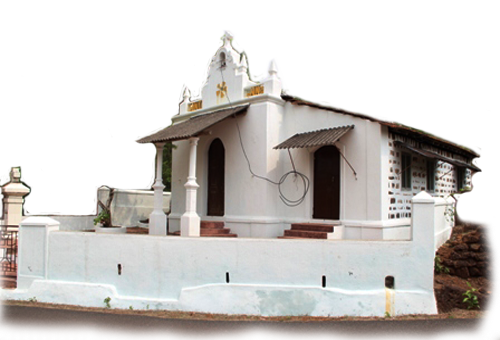 Hem Kopel 1947 vorsa Sant Annak bhettoilem. Hanche poili hea vaddeant don kopela bandlollim.
Pun lokak tea Kopelani vochunk adkholl zatali dekhun, xekim rosteak lagim Kopel bandunk ieujilem.
Hea kopelache fest Juliche 26ver dobachean monnoita.
Hem Kopel 1947 vorsa Sant Annak bhettoilem. Hanche poili hea vaddeant don kopela bandlollim.
Pun lokak tea Kopelani vochunk adkholl zatali dekhun, xekim rosteak lagim Kopel bandunk ieujilem.
Hea kopelache fest Juliche 26ver dobachean monnoita.
Sant Khursachem Kopel:Pequeno Carona
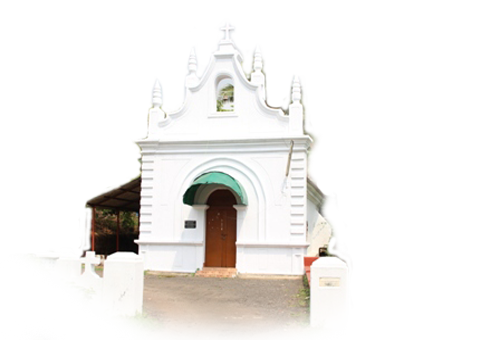 Hea Kopelache fest, Bhag. Thomasache fest Igorjent somorombtoch, tin disa uprant monoitat,
dobajik misantlean. Hem Kopel 2002 vorsa vaddeachea lokanni sagata mellun sarke korun,
tachi sobitkai vaddoilea.
Hea Kopelache fest, Bhag. Thomasache fest Igorjent somorombtoch, tin disa uprant monoitat,
dobajik misantlean. Hem Kopel 2002 vorsa vaddeachea lokanni sagata mellun sarke korun,
tachi sobitkai vaddoilea.
Sant Anachem Kopel:Muddo
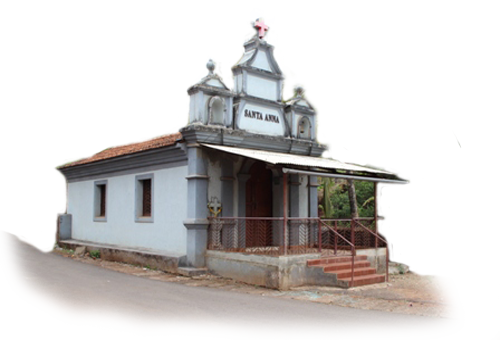 Hem Kopel Irmiti mukharuch rostear asa, sagta ki hem Kopel 1865 vorsa bandlam.
Juliache 26ver hea kopelachi porob vhodda netan monoitat.
Hem Kopel Irmiti mukharuch rostear asa, sagta ki hem Kopel 1865 vorsa bandlam.
Juliache 26ver hea kopelachi porob vhodda netan monoitat.
Sant Sebastianvachem Kopel:Lankdem
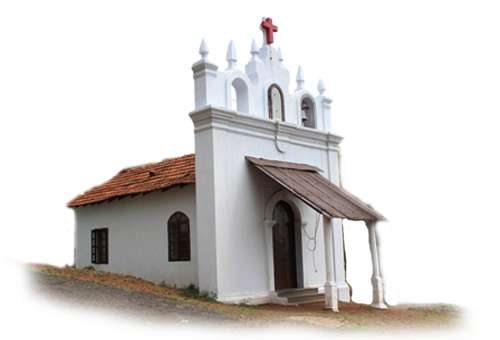 Hem Kopel bandlole 1925 vorsa, Pri. Jose Bras da Gama hannem. Hea Kopelant 1940
vorsa pasun festa somoiar mis bettoitat. Dor vorsa hem fest 9 disache toiari uprant
Janerache 22ver vhodda ghonghonnan somorombtat.
Hem Kopel bandlole 1925 vorsa, Pri. Jose Bras da Gama hannem. Hea Kopelant 1940
vorsa pasun festa somoiar mis bettoitat. Dor vorsa hem fest 9 disache toiari uprant
Janerache 22ver vhodda ghonghonnan somorombtat.
Khuris:Carvalhovaddo
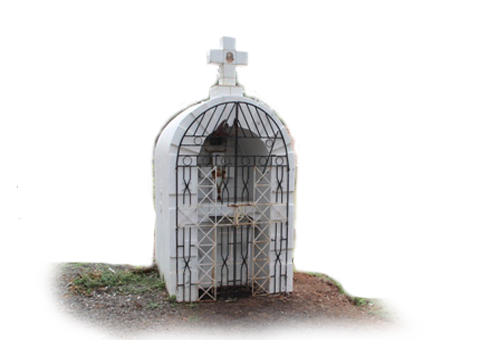 Bhou adlo khuris ho. Maiachea mhonneant tachi porob somorombtat.
Tech porim Bhag. Antonichi porob mhonnoitat.
Bhou adlo khuris ho. Maiachea mhonneant tachi porob somorombtat.
Tech porim Bhag. Antonichi porob mhonnoitat.
Sant Sebastianvachem Kopel:Nivim
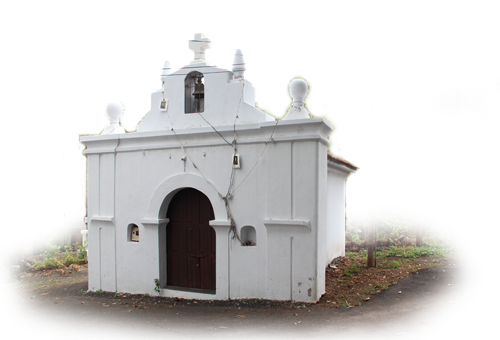 Supurlem Kopel hem, Sant Sebastiavank bettoilolem. Maiache mhoinneant Sant Sebastianvachi porob
somorombtat. Adim ladinn korun fest kortale, halimchea kallar, festa dis Mis somorombun
hea vaddeant ani Kopelant bhokti ani bhavart somorombtat.
Supurlem Kopel hem, Sant Sebastiavank bettoilolem. Maiache mhoinneant Sant Sebastianvachi porob
somorombtat. Adim ladinn korun fest kortale, halimchea kallar, festa dis Mis somorombun
hea vaddeant ani Kopelant bhokti ani bhavart somorombtat.
Khuris:Sonetem
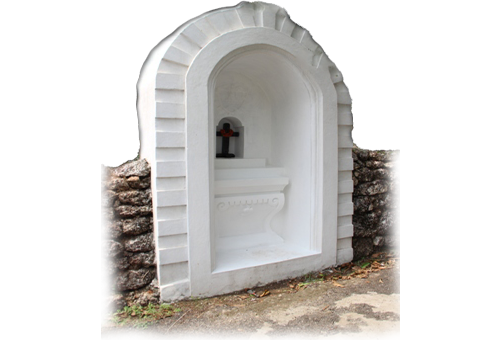 Maiachea mhoinneant , dobajean , hea vaddeacho lok fest monoitat ani bhavponn somorombtat.
Maiachea mhoinneant , dobajean , hea vaddeacho lok fest monoitat ani bhavponn somorombtat.
Fabrica
The Fabrica is the administrative body of the Chapel. The members are appointed by the Bishop and have a term of 3 years. They look after the administration of the Chapel (e.g. Finances)
Parish Pastoral Council
The PPC members are a link between the Church, Chapel and the wards. Each ward is represented by a PPC Member who looks after the various spiritual as well as other activities of the Church.
Catechist
Catechetical Association inculcates love of God and man in young minds through catechism classes held every Sunday.
Youth group
The young brigade of the Chapel. The Youth with their vibrant energy and talents take part and organise different activities and help in different Chapel Functions.
Choir group
Led by Noel D’souza, the choir lends their voices for different masses and lead the people in praising the Lord. Be it the Sunday Mass or a Wedding mass or a Feast Mass, the choir is always well prepared for it through rigorous practices under the guidance of Noel.
Alter Servers
These young boys and girls serve at the Altar assisting the Priest for every Sunday as well as regular Masses. They come for the meetings held on every Saturday with great enthusiasm. Each of them has a desire to serve at the Altar of the Lord.
Alter ladies
Probably one of its kind in Goa, the Altar Ladies group in the Chapel look after the Altar Linen and other requirements of the Altar. They also see to the serving of refreshments during various occasions.
Legion of Mary
The members of this Devotion are ardent devotees of Mother Mary and through their devotion to Her they pray for the entire community.
-

Pri Tome Damiao Cordeiro
1921 vorsa, Carona bhitor sorlo amcho poilo Copelaum ravnnar Caronche irmidin, Pri. Tome Damioa Nicolau Jose Cordeiro zo irmidichi pos gheta 8 ve Agostache 1921 vorsa. To vortovlo ek khoddegantt pregador, sthapnnar eka boreantlea borea ‘Santa Rita’ portuguez escolcho ani ghoddnar amche irmidichea orixtt fundacho zachi khobor dixtti poddta ekek marmoriche fatnir ji ghalea sakristiche vonttir irmidichea vosreant. To ektis vorsam amche modem jielo 1921 – 1951.
-

Pri. Caetano D'silva
Amcho durso Chopelaum zaun asa Pri. Caetano D’Silva zo Carona ailo 1953 vorsa ani amche modem ravlo fokot dha mhoine.
-

Pri. Roberto Barreto
Amcho tisro Copelaum vortovlo Pri. Roberto Barreto zo ravlo amchem modem fokot char mhoinne.
-

Pri. Nicolau Xavier Mendes
Pri. Nicolau Xavier Mendes zo Carona ailo 1954 vorsa, zaun asa amcho chovto Copelaum. To amche modem 1974 voros pasun ravlo. Zaito vavr tannem kelo , odik korun 1964 vorsa jedna ami somrombhli porob amche irmidichea poilea xekddeachi ani tech bhaxen tea uprant jednam ami ubharlem hem novem durig amchea adrachem.
-

Pri. Wilson Almeida
Amcho panchvo Copelaum vortovlo Pri. Wilson Almeida zo amche modem ravlo 1974 tem 1977 voros passun.
-

Pri. Agnelo Mendes
Tache patlean ailo amcho sovo Copelaum, Pri. Agnelo Mendes 1977 tem 1983 voros passun. Hem dogui Capelaum zaite vavurleat boreponnan passun amche irmidichea ani tech bhaxen amchea vaddeachea.
-
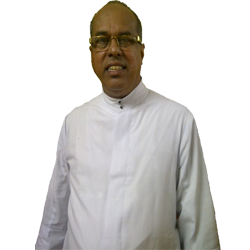
Fr Carlos Mendes
Pri. Carlos Mendes zaun asa amcho satvo Copelaum. To vortovlo ek boreantlo boro gaupi ani vazoupi. Carona tannem zaitem sudarop kelem ani amche irmidichi 125 vorsa to korunk pavlo. Tachea adharan Carona ‘St. Rita’ Shopping Complex toira zaunk pavlem. To amche modem 1984 tem 1991 vavurlo.
-
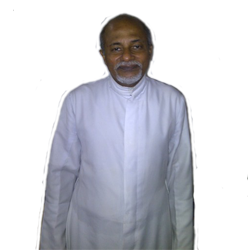
Fr Zeferino D'souza
Pri. Zeferino Dsouza amcho atvo Copelaum. Jezuche ollkicho vavr tannem fuddem velo. Tachea fuddariponna khal irmidiche residence proton bandun kadle. To amche modem 1991 tem 1996 vorsam aslo
-
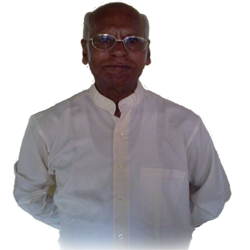
Pri Jaime Couto
Amcho novo Copelaum, Pri. Jaime Couto. Tannem chodd- so xallent vavr kelolo. Carona tache Gonvllik vavracho poilo onnbhov. Caronnche dor eke family mahiti, tache vadd dis adi ekttaim korun ‘Family Cards’ toiar kelint. To amche modem sov vorsa ravlo, 1996-2002.
-
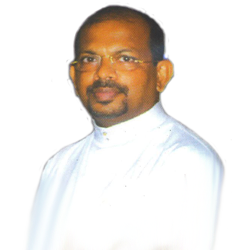
Fr Mateus Rodrigues
Pri. Mattew Rodrigues, boro gaupi ani musician amcho dhavo Copelaum zalo. Tannem amkam novem St. Ritache gaoin goddun dilem. To soglleancho mogacho, bhou korun burgeam ani tornatteacho. Dor skokallim Bhou Povitr Sacramentacho nomoskar tannenuch suru kelo. To amche modem 2002- 2007 vorsa varvurlo.
-

Fr Antonio Oliveir
Amcho ikravo Copelaum, Pri. Antonio Oliveira. Agartala ganvant missanvacho vavr kelea uprant tachi nemnnuk amchea gavant zali. Taka ami mogan AOB mhonntalint (Antonio Olieveira Boro). Missavachea ganvantle aple onnbhov tornnatteam borobor vanttalo. To amche modem fokot ekuch voros vavurlo, 2007-2008.
-

Fr Venancio Fonseca
Dr (Fr) Venancio Fonseca don vorsam amchea Kopelant Copelaum koso vavurlo. Ogeponnan vavr korpi ani thoddeach utrancho monis to, pun khupuch zannvaein borololo. Tannem aple unchle xikop kele ani Ph.D podvi zoddlea.
-

Fr Joaquim Fernandes(Current)
Amcho teravo ani atam aso toh copelaum Pri Joaquim Fernandes amchea gavant 2010 vorsa bhitor sorlo. Tache bhag voddlem kiteak taka amche irmidichi 150 vorsa monnopachi sondi mellim. Zaite koxtt toh amchem irmidi pasun gheta,ani zaite udorgot tannem keleam irmidichea saidic bore garden ani bhurgeak kellunk ek dhaktoso park kellam.Devacho mog caronche povitr sobhea kallzani vadounk toh khub thokos gheta
Events
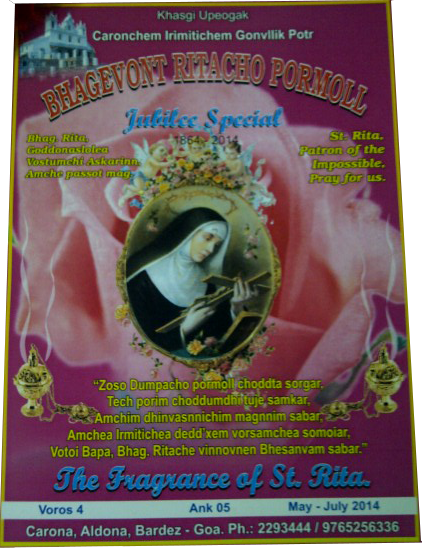
Releasing of the Bhagevont Ritacho Pormoll
The soveiner was released through the hands of Bishop Allwyn Barreto on the occasion of 150 years of St Rita Chapel Carona
Date:22/05/2014
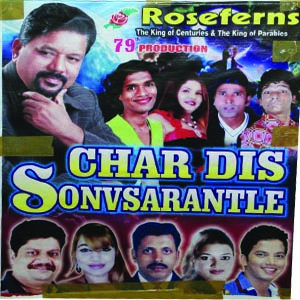
Tiatr
Name:Char dis sonvsarantle
Timings:7.00pm
Vanue:Irmitichea Adrar
Tickets:100 Rs





